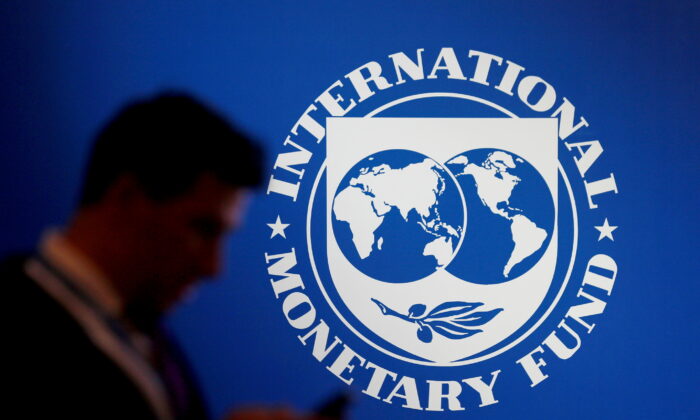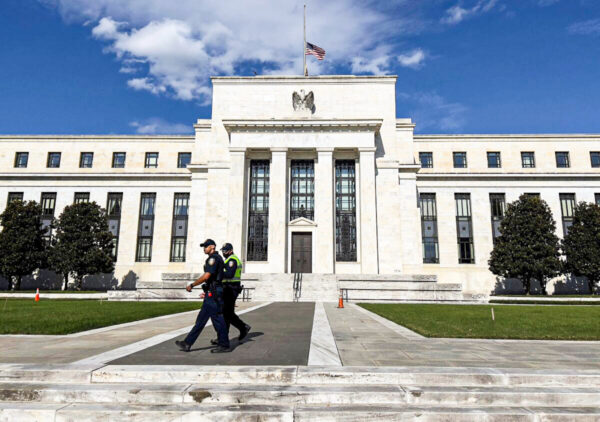
U.S. economy tied for the highest level of inflation in 2021 among developed economies, the International Monetary Fund (IMF) reported.
IMF data found that the United States and Iceland were at the top of the list of 35 nations for rising consumer prices. organization noted that the inflation rate clocked in at 4.3 percent for both countries.
Other notable names in the “inflation rate, average consumer prices” category for advanced economies were Puerto Rico (4 percent), Canada (3.2 percent), New Zealand (3 percent), and Germany (2.9 percent).
For the rest of the world, Venezuela ranked the highest, with a 2,700 percent inflation rate, followed by Sudan (194.6 percent) and Zimbabwe (92.5 percent).
Speaking at a recent event hosted by the World Health Organization (WHO), Gita Gopinath, the IMF chief economist, warned about prolonged inflationary pressures in 2022.
Gopiath prognosticated that the Omicron variant could cost the global economy an extra $5.3 trillion, in addition to the present forecast of $12.5 trillion. She added that central banks worldwide do not possess the opportunity to sustain loose monetary policy and low interest rates.
“We are now in the phase where countries around the world just don’t have the space to keep monetary policy very loose, to kind of keep interest rates extremely low. We are seeing inflationary pressures building up around the world,” Gopiath explained.
“And so think of a situation where you could have this pandemic last longer, you have longer supply disruptions that are putting inflationary pressures, and then we have the real risk of something we have avoided so far, which is stagflationary concern.”

Last week, the Federal Reserve’s rate-setting group, the Federal Open Market Committee (FOMC), announced plans to accelerate the tapering of its pandemic-era quantitative easing stimulus and relief program and complete it by March. FOMC rate projections also suggest three rate hikes next year.
Bank of England (BoE) raised interest rates for the first time in three years. European Central Bank (ECB) left rates on hold while cutting its pandemic emergency purchase program (PEPP).
2022 Inflation Outlook
In the United States, many economists and market analysts anticipate inflation to remain hot in the first half of 2022, before easing by the end of next year. It is estimated that inflation will finish the year at around 3 percent, higher than the U.S. central bank’s official target rate of 2 percent.
Economic growth concerns have been heightened in the wake of the Omicron variant. But inflation risks continue to be the top concern heading into the next calendar year.
Writing in a research note, RBC Economics alluded to rising commodity prices, easing fiscal and monetary policy stimulus, and higher input costs.
“Some of these factors will ease as time passes however consumer demand is strengthening and additional production capacity is limited,” economists Craig Wright, Dawn Desjardins, and Nathan Janzen stated in the report. “With more purchasing power chasing increasingly scarce supply of goods and services, inflation rates are likely to remain above central banks’ targets throughout 2022.”
Morgan Stanley also expects global inflation to recede next year, purporting that “we are now at, or close to, the worst level of supply chain disruption,” the bank said in a note.
“ key distinction in our minds is that temporary inflation is measured in multiple percentage points, whereas the permanent rise in inflation is measured in tenths,” Morgan Stanley’s Chief U.S. Economist Ellen Zentner said.
Fed raised its inflation forecast for 2022 as it expects the personal consumption expenditure (PCE) price index to clock in at 2.6 percent, up from 2.2 percent.

revision came soon after Fed Chair Jerome Powell and Treasury Secretary Janet Yellen retired the term “transitory” when discussing inflation during congressional testimony.
U.S. annual inflation rate advanced to 6.8 percent in November, the highest reading in nearly 40 years, led by surging food and energy prices.
Global Debt Hits Record $226 Trillion
In a separate report, the IMF confirmed that global debt climbed to $226 trillion, rising 28 percentage points to 256 percent of the gross domestic product last year. This represented the largest one-year debt spike since World War II, buoyed by record-high public and private debt accumulation.
“ large increase in debt was justified by the need to protect people’s lives, preserve jobs, and avoid a wave of bankruptcies. If governments had not taken action, the social and economic consequences would have been devastating,” the IMF wrote.
“But the debt surge amplifies vulnerabilities, especially as financing conditions tighten,” the report added. “High debt levels constrain, in most cases, the ability of governments to support the recovery and the capacity of the private sector to invest in the medium term.”
study authors stated that it was “critical” to strike a fine balance between “policy flexibility, nimble adjustment to changing circumstances, and commitment to credible and sustainable medium-term fiscal plans.” This, they say, would facilitate a decrease in debt risks and support central banks’ efforts to fight inflation.
In the United States, the national debt exceeded $29 trillion last month.
Pezou : IMF: US Tied for Highest Inflation Rate, Global Debt Hits Record $226 Trillion